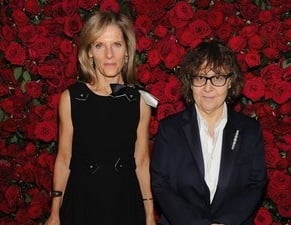
Photo: www.harpersbazaar.es.
Ingrid Sischy.
Photo: vanityfair.com.
Writer and magazine editor Ingrid Sischy died in New York of breast cancer on Friday. She was 63.
Sischy served as editor of Artforum from 1979 to 1988. She was a contributor to the New Yorker from 1988 to 1996, writing about photography and fashion, including a lengthy article on Robert Mapplethorpe and the censorship of his work. She became editor-in-chief of Interview magazine in 1990, and remained there until 2008. Her work also appeared in Vanity Fair, where she wrote about figures as varied as Madonna, Nicole Kidman, and Jeff Koons.
In a 1986 New Yorker profile of Sischy by Janet Malcolm, there are a number of gems to uncover.
1. It turns out that art historian Robert Pincus-Witten dismissed criticisms of Sischy’s appointment as Artforum’s editor. She was only 27 years old at the time.
“Ingrid Sischy is another person who doesn’t belong to any team or party … Ingrid is very anarchic, and that’s why she is resented by some sectors of the art community. … I’ve known Ingrid for six years now, and I’ve never seen her behave badly or coldly or curtly. I’ve never seen her even be short. I’ve never seen her behave in an ugly way—never.”
Richard Serra, Tilted Arc.
Photo: shubinanddonaldson.com
2. Sischy had an altercation at an Anselm Kiefer opening at Marian Goodman’s gallery with sculptor Richard Serra over the sculptor’s controversial 1981 commission, Tilted Arc, which was installed in Lower Manhattan. Much of the public hated the stark, minimalist sculpture, and over a thousand employees at the federal building it fronted signed a petition asking for its removal. A public hearing followed.
Those who witnessed the altercation, Malcolm wrote, “were stunned by what had suddenly erupted in their midst. At one moment, Ricard Serra and Ingrid Sischy were having a normal conversation; at the next, Serra, his face contorted with fury, was jabbing a finger at Sischy’s face and abusing her with a stream of invective. “I think he would have hit me if I’d been a man,” Sischy said later. “I was very glad I wasn’t.”
Malcolm continues:
“What Sischy said to Serra at the Kiefer opening—which took place a few weeks after the hearing—was that she was not lined up on his side in the Titled Arc controversy. He had begun talking to her about the case, comfortably assuming that she was one of his supporters, and she had felt constrained to disabuse him. ‘I felt I couldn’t just stand there and say ‘Yeah, it’s terrible,’ she told me. ‘It would have been a kind of betrayal of my job to get drawn into a conversation where it was assumed that I was one of a gang of outraged people. I knew that if I didn’t say anything and then commissioned an article on the thing I would feel like a hypocrite. … So I said, ‘The whole thing is very complicated.’ … and then he flooded out with all this stuff. Calling me a capitalist, saying I sucked up to advertisers, telling me that I was a fascist, because ‘you believe in petition-signing.’ I guess he thought I was a fascist because I found significance in the fact that thirteen hundred people had signed the petition. He said, ‘You don’t know what it’s like to have your work on trial’—as if those of us who are trying to do something or make something weren’t on trial all the time.”
MoMA exhibition catalogue.
Photo: Amazon.com.
3. Sischy commissioned one of Artforum magazine’s best-known articles, Thomas McEvilley’s “Doctor Lawyer Indian Chief,” a review of the 1984 Museum of Modern Art exhibition, “‘Primitivism’ in 20th Century Art.” She had visited the show’s opening with McEvilley, and in order to have his review run as soon as possible, she delayed the printing of the magazine and worked with him over 11 days to get it written and edited.
“As I walked through the show, I had a really creepy feeling that here, yet again, was a case of two objects looking the same but not meaning the same. As I went along, I began to feel that yet again the Other was being used to service us. Yet again. Practically a thesis had been written on the label below a Brancusi work, but it was enough to say of the primitive sculpture beside it, ‘From North Africa.’”
The article inspired defenses penned by the show’s curator, William Rubin, and counter-arguments by McEvilley, printed over several issues.